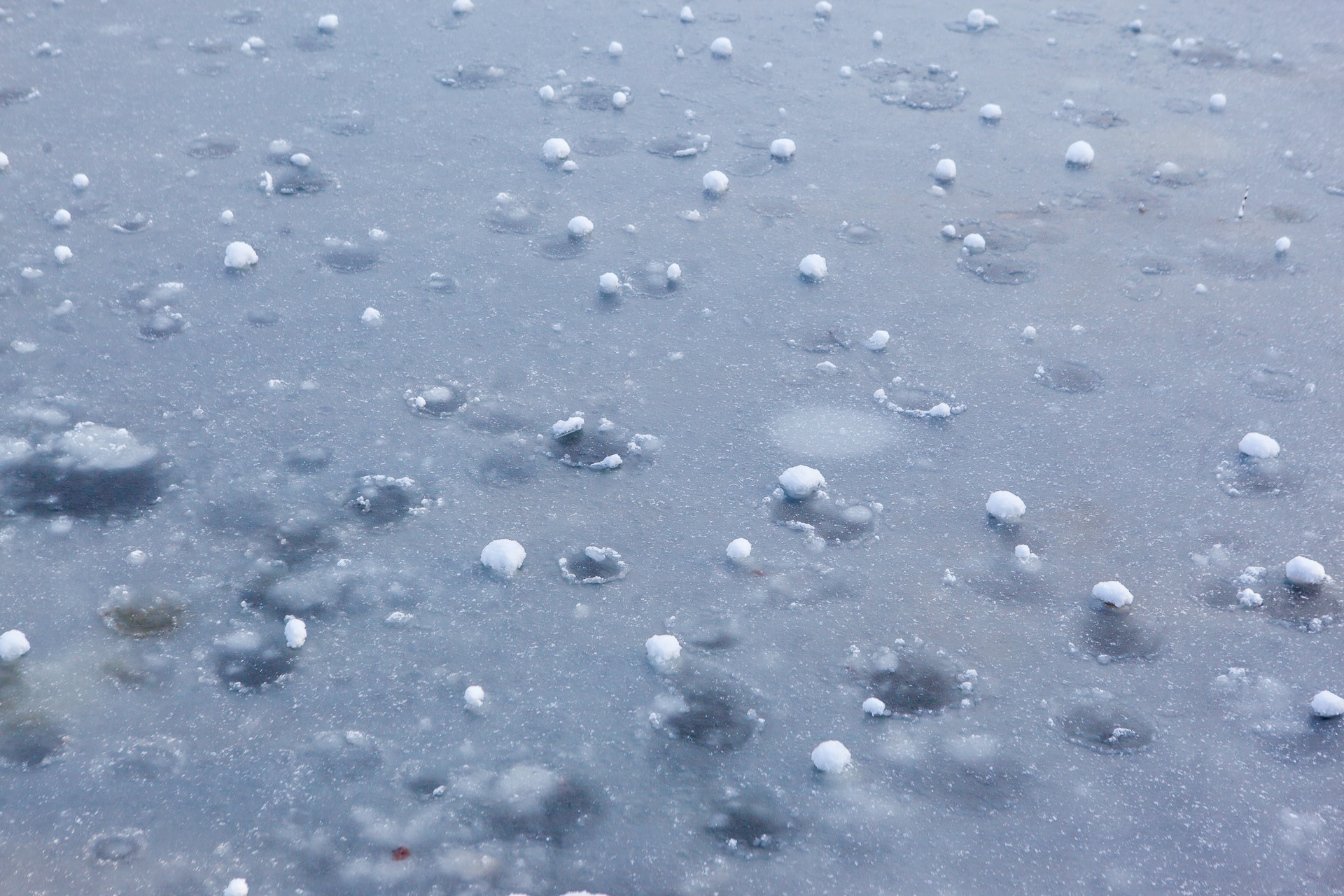Although hail is often seen as nothing more than a nuisance, it can actually cause a lot of damage to your car, home, and other property — something that victims who had car hail damage know all too well.
If you live in a hail-prone area and want to better prepare to protect yourself from damage, keep reading to learn five hard-hitting facts about hail that everyone should know.
#1. Hail Is Usually Tiny
While monster hailstones the size of golf balls or softballs are possible, for the majority of storms, hail is usually only around the size of a pea or a marble.
In general, the weaker the storm is, the smaller the hailstones are. This is because hailstones are formed when water droplets freeze and clump together with other water droplets at very high altitudes. The stronger the storm’s updraft, the longer hailstones have to form larger clumps before gravity makes them fall to the ground.
Although small hailstones may not seem very impactful, they can actually cause a lot of damage. When hundreds of tiny hailstones pelt your car at high speeds, they can create dents, dings, chips, and other cosmetic damage.
#2. The Larger Hailstones Are, The Faster They Fall
Just like the size of hailstones can give you an indication of how strong the storm is, it can also give you a clue as to how fast the hailstones are falling. In general, the bigger the hailstones are, the faster they fall — which means more damage when they finally touch down to Earth.
While small hailstones that range in size from a pea to a quarter can fall at speeds averaging 9 to 25 miles per hour, larger hailstones can fall significantly faster. Hail the size of a quarter to a golf ball can fall at speeds of 25 to 40 miles per hour, while super giant hailstones the size of softballs can reach speeds of 44 to 72 miles per hour.
The reason behind this is relatively simple physics — heavier things have greater gravitational force and lower acceleration, so they tend to fall faster.
#3. Hail Causes Over $10 Billion In Damage Each Year
With hail storms being a regular occurance across a large swath of the midwestern United States, it’s no surprise that thousands of people file an insurance claim about hail damage every season. But did you know that total yearly claims in the United States can be as much as $10, $12, or even $14 billion?
According to Verisk Insurance Solutions yearly reports, the total number of U.S properties that were affected by hail in 2021 was 6.2 million, and these properties claimed about $14.2 billion in losses combined. In 2019, it was only slightly less, with 7.1 million affected properties with losses at $13 billion.
#4. Vehicle Damage Is the Biggest Hail Risk
Although home and property damage is a regular occurence, the most common type of hail damage by far is car hail damage. And because vehicles are often left outside during a storm, they’re very vulnerable to being hit by hailstones — no matter how small or large they may be.
Cars are also made out of less sturdy materials that are more prone to getting damaged by hail. While concrete or wood can withstand most minor hail, the metal and glass of cars is susceptible to dents, chips, and cracking.
#5. “Hail Alley” Is the Most At-Risk Region of the United States and Canada
If you live in the central United States, there’s a higher chance that you’ve experienced hail damage at some point. That’s because this region is colloquially known as “Hail Alley,” and it experiences more thunderstorms and hailstorms than any other part of North America.
Hail alley refers to the great plains region across the U.S and Canada. It includes states like Colorado, Nebraska, Kansas, Oklahoma, Texas, Wyoming, Montana, and the Canadian provinces of Alberta and Saskatchewan.
This region experiences seven to nine hail storms per year, mostly because the region is just right for creating hail — it stays cold enough to keep the hail frozen, and it’s at a high elevation, which gives hailstones less time to melt before they hit the ground.
If the roof to your home is damaged by hail make sure to have Kansas City roof repairprofessionals take a look and fix any damage that may have occurred.
Conclusion
Hail can be a surprisingly serious problem, causing billions of dollars in damage every year. It’s important to know how hail works, whether you live somewhere prone to hail, and just how damaging it can be. This is so you can take proper steps to avoid damage, and know how to fix hail damage when it occurs.




